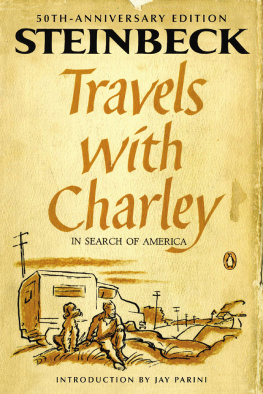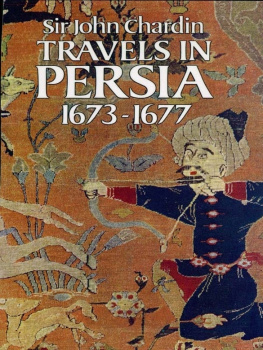John Mandeville - The travels of Sir John Mandeville
Here you can read online John Mandeville - The travels of Sir John Mandeville full text of the book (entire story) in english for free. Download pdf and epub, get meaning, cover and reviews about this ebook. City: London, year: 2005, publisher: Penguin, genre: History. Description of the work, (preface) as well as reviews are available. Best literature library LitArk.com created for fans of good reading and offers a wide selection of genres:
Romance novel
Science fiction
Adventure
Detective
Science
History
Home and family
Prose
Art
Politics
Computer
Non-fiction
Religion
Business
Children
Humor
Choose a favorite category and find really read worthwhile books. Enjoy immersion in the world of imagination, feel the emotions of the characters or learn something new for yourself, make an fascinating discovery.

- Book:The travels of Sir John Mandeville
- Author:
- Publisher:Penguin
- Genre:
- Year:2005
- City:London
- Rating:5 / 5
- Favourites:Add to favourites
- Your mark:
- 100
- 1
- 2
- 3
- 4
- 5
The travels of Sir John Mandeville: summary, description and annotation
We offer to read an annotation, description, summary or preface (depends on what the author of the book "The travels of Sir John Mandeville" wrote himself). If you haven't found the necessary information about the book — write in the comments, we will try to find it.
The travels of Sir John Mandeville — read online for free the complete book (whole text) full work
Below is the text of the book, divided by pages. System saving the place of the last page read, allows you to conveniently read the book "The travels of Sir John Mandeville" online for free, without having to search again every time where you left off. Put a bookmark, and you can go to the page where you finished reading at any time.
Font size:
Interval:
Bookmark:

THE TRAVELS OF SIR JOHN MANDEVILLE
Little is known about the identity of the author of The Travels apart from what he himself tells us in the book and what can be deduced from the manuscripts. There is no conclusive evidence to prove any theory of who he was; he claims to be an English knight who travelled from 1322 to 1356 (1332 to 1366 in some versions) during which time he served with the Sultan of Egypt and the Great Khan. The book first began to circulate in Europe in the third quarter of the fourteenth century and it rapidly became one of the most widely read works of geographical information. Originally written in French, by 1500 some version of the book was available in every major European language. Whilst there is some doubt as to whether or not Mandeville actually travelled, this in no way detracts from his literary ability. The Travels is a witty and skilful creation which had a considerable influence on the concepts of the world held in the late Middle Ages and Renaissance period, and was known to the great navigators and discoverers. It is also a clever and serious critical look at the European society of its own day.
DR MOSELEY was educated at Queens College, Cambridge. He has taught Medieval and Renaissance literature in Cambridge for many years, and still sees reading books as a serious activity. For Penguin he has edited two of Chaucer's Canterbury Tales, the Knights and the Pardoners, and a monograph on Shakespeare's Richard III, as well as Shakespeare's History Plays: Richard II to Henry V: The Making of a King. Dr Moseley is also the author of the first introductory anthology on the fascinating Renaissance form of the emblem, A Century of Emblems, published by Scolar Press. His enthusiasm for Mandeville resulted from the chance finding of an old copy in Cambridge University Library and is now of many years standing; it seems to be increasing. His family and friends have been very forbearing. His other activities are of no particular interest save to his anxious family, his neighbours and the surrounding wildlife.
Translated with an Introduction by
C. W. R. D. MOSELEY
PENGUIN BOOKS
PENGUIN BOOKS
Published by the Penguin Group
Penguin Books Ltd, 80 Strand, London WC2R 0RL, England
Penguin Group (USA) Inc., 375 Hudson Street, New York, New York 10014, USA
Penguin Group (Canada), 10 Alcorn Avenue, Toronto, Ontario, Canada M4V 3B2
(a division of Pearson Penguin Canada Inc.)
Penguin Ireland, 25 St Stephen's Green, Dublin 2, Ireland (a division of Penguin Books Ltd)
Penguin Group (Australia), 250 Camberwell Road, Camberwell, Victoria 3124,
Australia (a division of Pearson Australia Group Pty Ltd)
Penguin Books India Pvt Ltd, 11 Community Centre,
Panchsheel Park, New Delhi 110 017, India
Penguin Group (NZ), cnr Airborne and Rosedale Roads, Albany,
Auckland 1310, New Zealand (a division of Pearson New Zealand Ltd)
Penguin Books (South Africa) (Pty) Ltd, 24 Sturdee Avenue, Rosebank 2196, South Africa
Penguin Books Ltd, Registered Offices: 80 Strand, London WC2R 0RL, England
www.penguin.com
This translation first published 1983
Reprinted with a revised Introduction, new Notes and Bibliography 2005
This translation and editorial material copyright C. W. R. D. Moseley, 1983, 2005
All rights reserved
Except in the United States of America, this book is sold subject
to the condition that it shall not, by way of trade or otherwise, be lent,
re-sold, hired out, or otherwise circulated without the publisher's
prior consent in any form of binding or cover other than that in
which it is published and without a similar condition including this
condition being imposed on the subsequent purchaser
EISBN: 9781101493953
dilectissimis pignoribus
Antoniae Justinoque
qui mirabilia Domini videant
When Leonardo da Vinci left Milan for France in 1499, he had an inventory made of his library. His books reflected his wide interests, and the depth of his reading. He owned several books on natural history, on the sphere, on the heavens. But out of the multitude of travel accounts Leonardo could have had, in MS or from the new printing press, the list records only the one: Mandevilles Travels. At about the same time, Columbus (according to Andrs Bernldez Life) was treating Mandeville with great seriousness as a source of information on China and the East while he prepared for his voyage; and in 1576 a copy of the Travels was with Frobisher as he nosed into Baffin Bay. The number of people who relied on the Travels for practical geographical information in the two centuries after it first appeared demands that we give it serious attention if we want to understand the late medieval and Renaissance mental picture of the world. But in 1605 Bishop Joseph Hall can speak of whetstone leasings [lies] of old Mandeville; in 1640 Richard Brome can hang a satiric comedy (The Antipodes) designed for the popular theatre entirely on the book which suggests just how widely it was known and assume (rightly) that virtually nobody then would regard it seriously. The dismissive attitude to it that prevailed through most of the last century descends from this later tradition; but the Travels astonishing popularity (continuing even after it had ceased to command respect as a work of information) can be shown to depend on genuine merits. Ironically, both the earlier uncritical acceptance and that later dismissal are based on a distorted view of what the author seems to have been trying to achieve.
The Travels first began circulating between 1356 and 1366. Originally written in French, by 1400 some version was available in every major European language; by 1500, the number of MSS was vast including Czech, Danish, Dutch and Irish versions and some three hundred survive. (For comparison, Polos Divisament dou Monde, of c. 1298, is represented in about seventy.) The many early printed editions, incunabula, indicate both the importance attached to it and its appeal to printers seeking profit in the new trade.
The MS history is extremely complicated. Briefly, the MSS divide into two groups, a Continental and an Insular version. (The Anglo-Norman variety of French was still current in English aristocratic circles.) The Insular version does not mention a story in the Continental which links the author with one Dr Jean de Bourgogne (author of an extant treatise De Pestilentia) and a wordy, industrious Lige notary, Jean dOutremeuse. There is no serious doubt that dOutremeuse handled a text and considerably influenced the scribal tradition of the Continental version, but there is not a shred of evidence to compel the conclusion that Mandeville was either de Bourgognes or dOutremeuses nom de plume, as was confidently suggested at the end of the nineteenth century. If dOutremeuse is unreliable (as we know him to be from elsewhere) and if the references to de Bourgogne depend on dOutremeuse, one might be inclined, with proper caution, to regard the earliest MSS of the Insular version as closer to the authors original. (The parent MS from which the Insular Version derives could of course have been written on the Continent.) But here is not the place to go into this complex matter.
So who was Mandeville? Despite much scholarly ingenuity, nothing is known of the author apart from what he tells us or may be deduced from his book and he is certainly creating a fictional
Font size:
Interval:
Bookmark:
Similar books «The travels of Sir John Mandeville»
Look at similar books to The travels of Sir John Mandeville. We have selected literature similar in name and meaning in the hope of providing readers with more options to find new, interesting, not yet read works.
Discussion, reviews of the book The travels of Sir John Mandeville and just readers' own opinions. Leave your comments, write what you think about the work, its meaning or the main characters. Specify what exactly you liked and what you didn't like, and why you think so.









